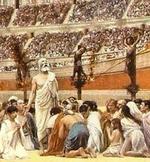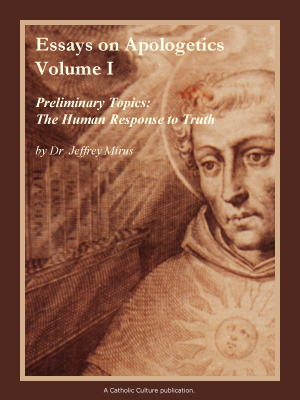Vatican Communication on Female Altar Servers
by Congregation for Divine Worship and the Discipline of the Sacraments
Rome, 15 March 1994
Excellence,
It is my duty to communicate to the Presidents of the Episcopal Conferences that an authentic interpretation of Canon 230 #2 of the Code of Canon Law will soon be published in Acta Apostolicae Sedis.
As you know, Canon 230 #2 lays down that:
"Laici ex temporanea deputatione in actionibus liturgicis munus lectoris implere possunt; item omnes laici muneribus commentatoris, cantoris aliisve ad normam iuris fungi possunt. "
The Pontifical Council for the interpretation of Legislative Texts was recently asked if the liturgical functions which, according to the above canon, can be entrusted to the lay faithful, may be carried out equally by men and women, and if serving at the altar may be included among those functions, on a par with the others indicated by the canon.
At its meeting of 30 June 1992, the members of the Pontifical Council for the Interpretation of Legislative Texts examined the following dubium which had been proposed to them:
"Utrum inter munera liturgica quibus laici, sive viri sive mulieres, iuxta C.I. C. Can. 230 #2, fungi possunt, adnumerari etiam possit servitium ad altare."
The following response was given: "Affirmative et iuxta instructiones a Sede Apostolica dandas."
Subsequently, at an Audience granted on 11 July 1992 to the Most Reverend Vincenzo Fagiolo, Archbishop Emeritus of Chieti-Vasto and President of the Pontifical Council for the Interpretation of Legislative Texts, Pope John Paul II confirmed the decision and ordered its promulgation. This will be done in the near future.
In communicating the above information to your Episcopal Conference, I feel obliged to clarify certain aspects of Canon 230 #2 and of its authentic interpretation:
1) Canon 230 #2 has a permissive and not a preceptive character: "Laici . . . possunt." Hence the permission given in this regard by some Bishops can in no way be considered as binding on other Bishops. In fact, it is the competence of each Bishop, in his diocese, after hearing the opinion of the Episcopal Conference, to make a prudential judgment on what to do, with a view to the ordered development of liturgical life in his own diocese.
2) The Holy See respects the decision adopted by certain Bishops for specific local reasons on the basis of the provisions of Canon 230 2. At the same time, however, the Holy See wishes to recall that it will always be very appropriate to follow the noble tradition of having boys serve at the altar. As is well known, this has led to a reassuring development of priestly vocations. Thus the obligation to support such groups of altar boys will always continue.
3) If in some diocese, on the basis of Canon 230 #2, the Bishop permits that, for particular reasons, women may also serve at the altar, this decision must be clearly explained to the faithful, in the light of the above-mentioned norm. It shall also be made clear that the norm is already being widely applied, by the fact that women frequently serve as lectors in the Liturgy and can also be called upon to distribute Holy Communion as Extraordinary Ministers of the Eucharist and to carry out other functions, according to the provisions of the same Canon 230 #3.
4) It must also be clearly understood that the liturgical services mentioned above are carried out by lay people "ex temporanea deputatione," according to the judgment of the Bishop, without lay people, be they men or women, having any right to exercise them.
In communicating the above, the Congregation for Divine Worship and the Discipline of the Sacraments has sought to carry out the mandate received from the Supreme Pontiff to provide directives to illustrate what is laid down in Canon 230 #2 of the Code of Canon Law and its authentic interpretation, which will shortly be published.
In this way the Bishops will be better able to carry out their mission to be moderators and promoters of liturgical life in their own dioceses, within the framework of the norms in force of the Universal Church.
In deep communion with all the members of your Episcopal Conference. I remain
Yours sincerely in Christ, (Cardinal Antonio Maria Javierre Ortas) Prefect
This item 5212 digitally provided courtesy of CatholicCulture.org






